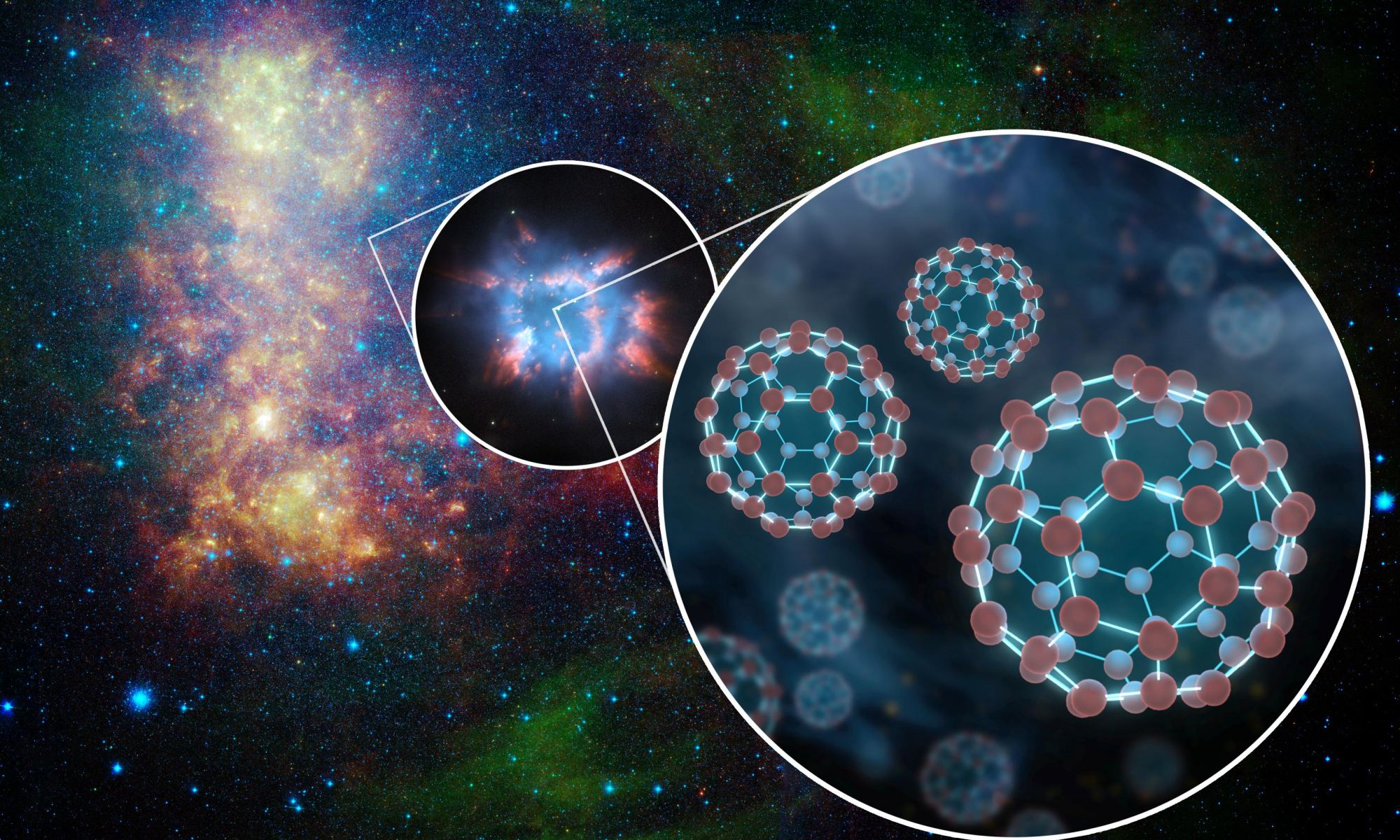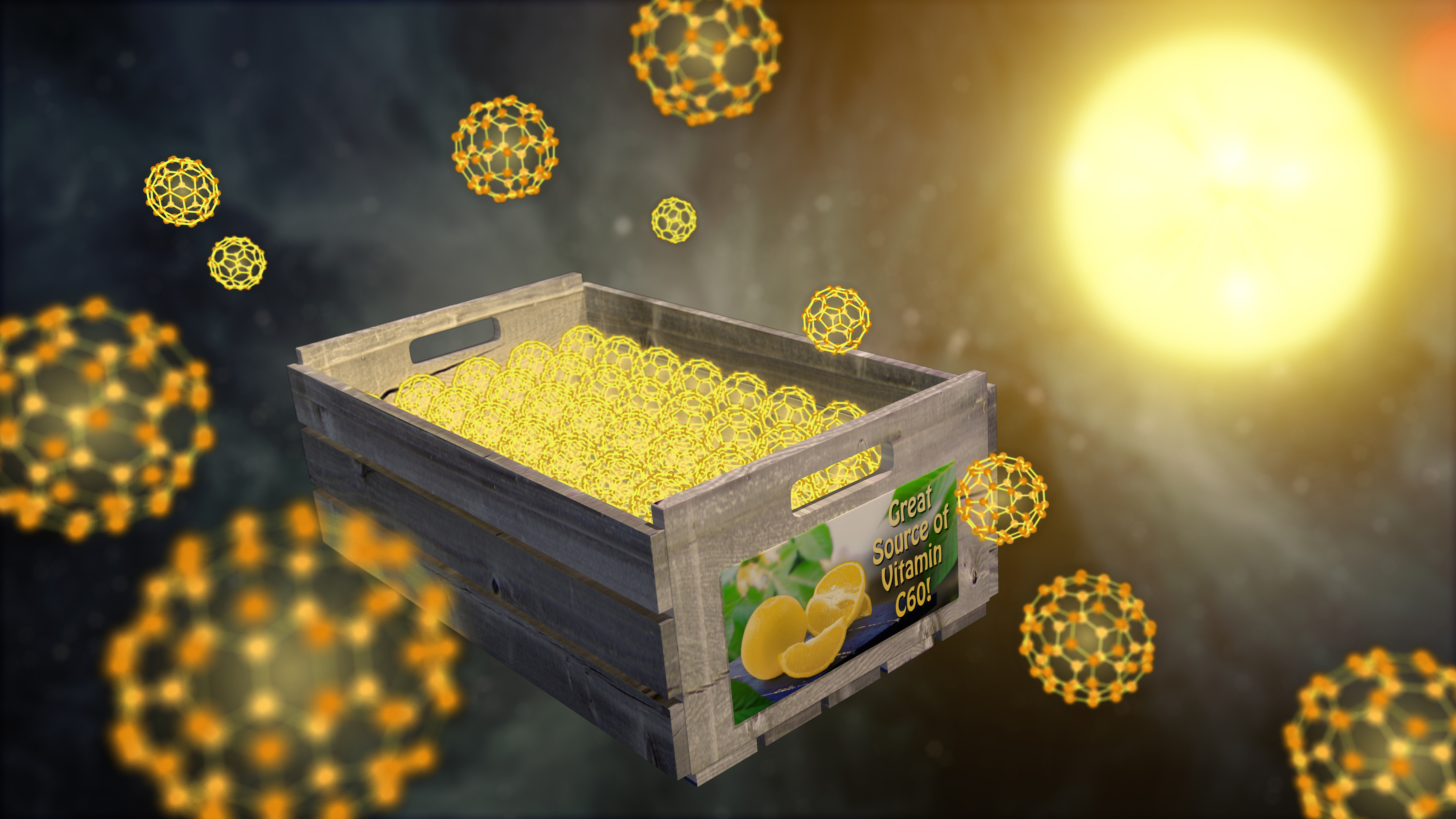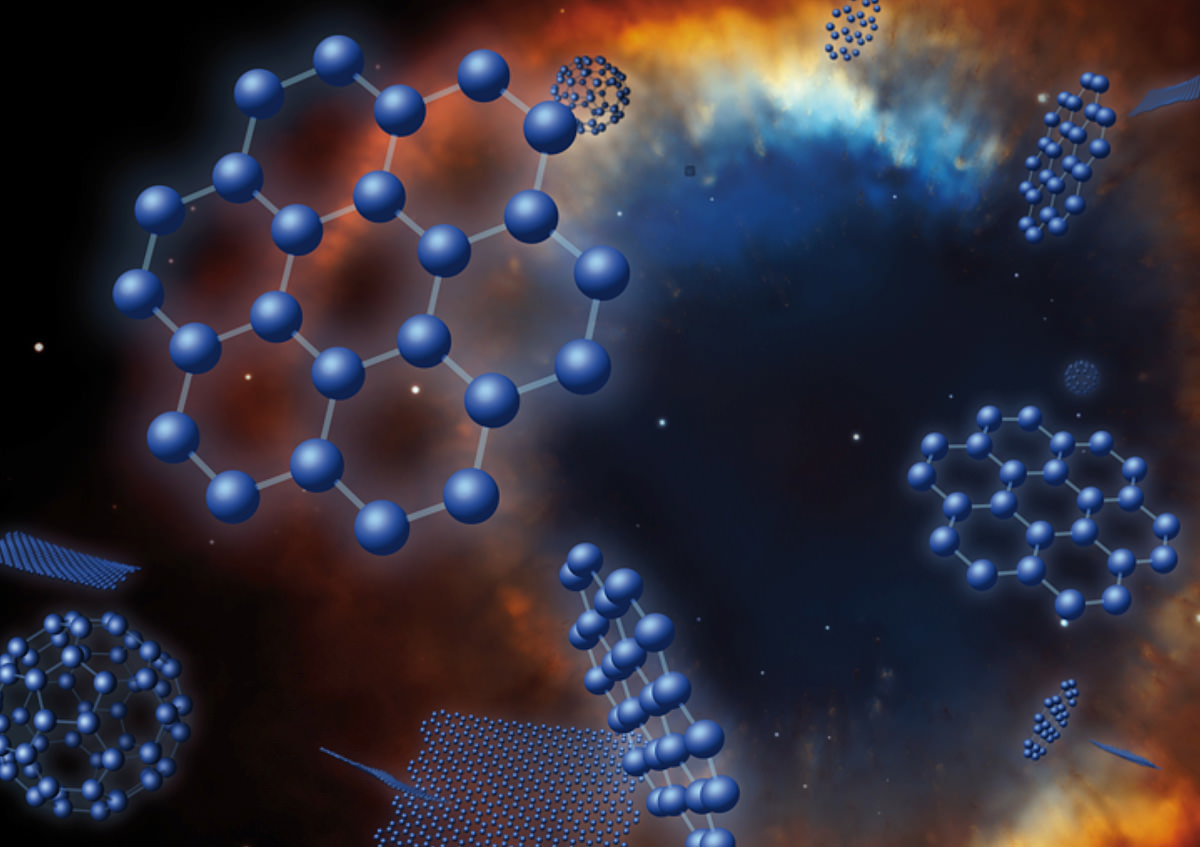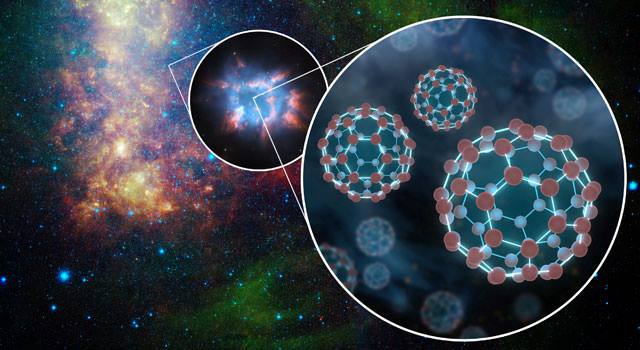[/caption]
Earlier this year, astronomers using the Spitzer Space Telescope announced they had found – for the first time — carbon molecules, known as “buckyballs,” in space. They were detected in one planetary nebula, and even though they were predicted to be rather prevalent out in space, no one was really sure. Until now. They’ve now been found in the space between stars, and around four more planetary nebulae, with one dying star in a nearby galaxy holding a staggering quantity of buckyballs — the equivalent mass of 15 times that of Earth’s Moon.
“It turns out that buckyballs are much more common and abundant in the universe than initially thought,” said astronomer Letizia Stanghellini of the National Optical Astronomy Observatory in Tucson, Ariz. “Spitzer had recently found them in one specific location, but now we see them in other environments. This has implications for the chemistry of life. It’s possible that buckyballs from outer space provided seeds for life on Earth.”
Buckyballs are soccer-ball-shaped molecules that were first observed in a laboratory 25 years ago, and are named for their resemblance to architect Buckminster Fuller’s geodesic domes, which have interlocking circles on the surface of a partial sphere. Also known as C60, and Fullerenes, they are the third major form of pure carbon; graphite and diamond are the other two. They have been thought to be common in space since they have been found in meteorites, and also in more everyday materials such as soot.
While two different studies announced today confirm that buckyballs could be widespread in space, they are turning up in places where astronomers thought they couldn’t exist. So, obviously we don’t have these molecules fully figured out yet.
All the planetary nebulae in which buckyballs have been detected are rich in hydrogen. This goes against what researchers thought for decades — they had assumed that, as is the case with making buckyballs in the lab, hydrogen could not be present. The hydrogen, they theorized, would contaminate the carbon, causing it to form chains and other structures rather than the spheres, which contain no hydrogen at all.
“We now know that fullerenes and hydrogen coexist in planetary nebulae, which is really important for telling us how they form in space,” said Anibal García-Hernández from the Instituto de Astrofísica de Canarias, Spain, lead author, working with Stanghellini on a paper appearing online Oct. 28 in the Astrophysical Journal Letters.
Using Spitzer, this team found the buckyballs around three dying sun-like stars, called planetary nebulae, in the our own Milky Way galaxy, plus in another planetary nebula the Small Magellanic Cloud, a nearby galaxy. This was particularly exciting to the researchers, because, in contrast to the planetary nebulae in the Milky Way, the distance to this galaxy is known. Knowing the distance to the source of the buckyballs meant that the astronomers could calculate their quantity — two percent of Earth’s mass, or the equivalent mass of 15 times that of Earth’s Moon.
Planetary nebulae are made of material shed from the dying stars.
Another Spitzer study about the discovery of buckyballs in space was also recently published in the Astrophysical Journal Letters, (October 10, 2010) and was led by Kris Sellgren of Ohio State University, Columbus. This study found that buckyballs are also present in the space between stars, but not too far away from young solar systems.
They were found among two nebulae; NGC 2023, located near the well-known Horsehead Nebula in the constellation of Orion, and the second, NGC 7023, known as the Iris Nebula, in the constellation Cepheus.
These are the largest molecules ever discovered floating between the stars. Astronomers aren’t sure yet if these cosmic balls formed in a nearby planetary nebula and wandered away, or if they perhaps can spring up in interstellar space.
“It’s exciting to find buckyballs in between stars that are still forming their solar systems, just a comet’s throw away,” Sellgren said. “This could be the link between fullerenes in space and fullerenes in meteorites.”
Since carbon is the key building block for life as we know it, their perhaps prevalent existence in space is intriguing.
“Now that there are buckyballs confirmed in the interstellar medium and in circumstellar space, it’s likely that chemists will get more interested in the astrobiological implications of these fascinating molecules,” Sellgren said.
Sources: JPL, NOAO,, CalTech/Spitzer
, Earlier detection of Buckyballs in Space — NASA




